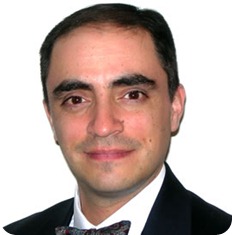“The
most difficult thing for my family is making sure that I am healthy and
will remain healthy in the near future,” Rucha explained. “Most parents
of young adults do not have to worry about that.”

It’s hard to overstate the strain on families from a lifelong blood disorder like thalassemia. Rucha and her family have worked hard to maintain good health ever since she was diagnosed at just seven months old.
The
Shah family was living in Mumbai, India at the time. Under the care of a
local hematologist, Rucha underwent regular blood transfusions and took
a chelation medication called L1 (also known as deferiprone) to
keep her iron levels under control. Iron buildup in vital organs,
particularly the heart, is one of the main causes of early fatality for
patients like Rucha.
Rucha’s family kept
up-to-date about the latest research, medications and other information
through newsletters from the Cooley ’s Anemia Foundation (CAF),
which they learned about through one of their relatives. Especially
early on, these newsletters were helpful in guiding family decisions
about their daughter’s well being.
 | |
| "Thalassemia, although a huge part of my life, does not dictate it.” |
When
she was 16, her hematologist placed her on a more aggressive regimen of
iron-chelating medications, adding Desferal injections to Rucha’s
routine. That meant enduring almost-daily needle jabs and between eight and 12 hours of being attached to a subcutaneous injection pump.
And that’s one of the hardest things for parents of children with
thalassemia: the treatments require long stretches of time and are often
painful.
Rucha’s
treatment regimen became even more complicated at age 18, when her
family immigrated from Mumbai to the Philadelphia, Pennsylvania area in
2005. The L1 medication that she’d taken all her life hadn’t yet been
approved in the United States (it received FDA approval in 2011 and is
now available), and so she had to depend solely on Desferal injections.
In 2006, she began using a newly approved oral chelation medication
called Exjade, and has been taking it ever since.
In addition to the difficulty of switching medications, Rucha had to contend with the challenges of life in a new country.
“The
hardest thing was settling down, making new friends and understanding
new culture,” Rucha said. “And there’s the added difficulty of
explaining to friends that I have thalassemia.”
“And there are also physical difficulties,” she continued. “At
the end of the day, I just want to go home and crash in my bed,
especially few days before my next transfusion. I see my friends go out
and have a good time after work or school is over. That is hard for me.”
Difficulties
aside, Rucha was determined to meet all of these challenges, and more.
With resolve and support from her family, she went to college to study
the very things that had both complicated her life and helped keep her
healthy.
 | |
| “I am as optimistic and capable of achieving my dreams as anybody else.” |
“I
received my Bachelor of Science degree in biochemistry. And right now,
I’m considering post-graduate studies in biomedical sciences, clinical
or basic research,” she explained. “I have always been fascinated by how
our body works and how genes, proteins and biochemical messengers send
signals to various parts of our body.”
It’s
always difficult for a family – and especially a child – to understand
illnesses and why their bodies don’t always work the way other peoples’
bodies do. Rucha Shah, whose life has involved all kinds of medications
and treatments, is trying to develop a deeper understanding of those
things, in the hope of helping others like herself and her family. She’s
still receiving helpful information and social support from CAF to help
her along the way.
“I am as optimistic and capable of achieving my dreams as anybody else,” Rucha said. “Thalassemia, although a huge part of my life, does not dictate it.”
| ||
| Story: Roger Burks ____ Photos: Thatcher Hullerman Cook |
 Dr. Javier Bolaños Meade is the Associate Professor of
Dr. Javier Bolaños Meade is the Associate Professor of